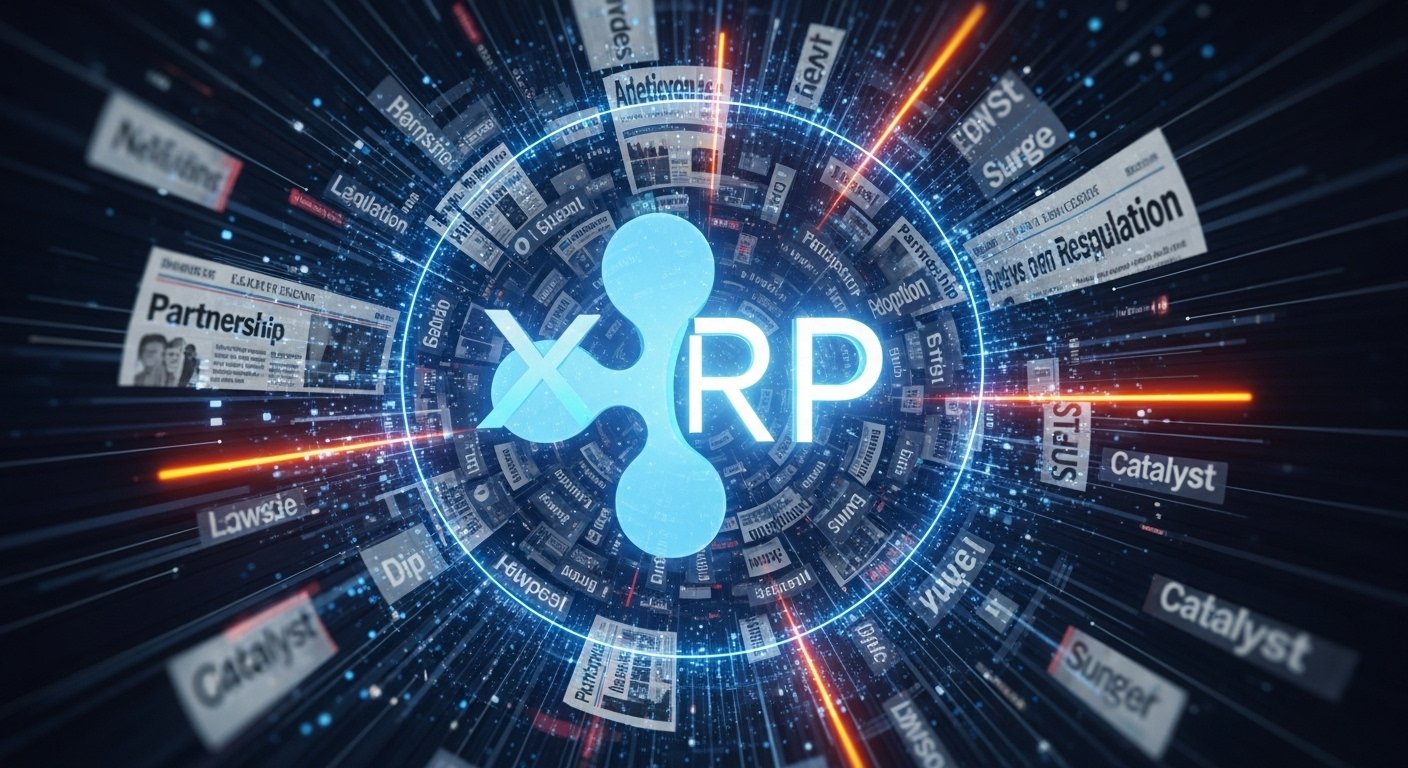Markets are no longer crowded pits where human voices set prices in bursts of emotion. Today, price discovery is increasingly a conversation among machines. This evolution has brought clarity and confusion in equal measure. On one hand, algorithmic trading has sharpened execution, tightened spreads, and widened access to sophisticated strategies. On the other hand, it has complicated our understanding of who or what is acting in markets and why.
When a portfolio manager delegates decisions to code, when a broker’s router splits orders across venues, and when a liquidity provider quotes thousands of instruments at sub-second intervals, the old, tidy notion of a single decision-maker dissolves. That is where the idea of market agency enters: the question of how agency is distributed among humans, institutions, and algorithms—and how that distribution shapes outcomes.
Defining Algorithmic Trading and Market Agency
What Is Algorithmic Trading?
Algorithmic trading is the systematic use of rules encoded in software to decide when and how to trade. Rules can be simple—like slicing a large order into time-stamped child orders—or complex—like multi-asset models that weigh cross-sectional signals to build and unwind portfolios. In practice, algorithms ingest data, transform it into features, and act according to a model of expected value and risk. The algorithm is only as rational as its objective function and constraints. If the function rewards speed, behaviour willfavourr rapid submission and cancellation. If it rewards stability, behaviour willprioritisee inventory control and hedging.
The scope ranges widely. Execution algorithms focus on minimising costs like slippage and market impact, while strategy algorithms seek alpha by predicting return distributions. Some operate at millisecond timescales; others rebalance at the daily close. Each design location—data, model, objective, constraints—embeds a choice, and each choice expresses a form of agency.
What Do We Mean by Market Agency?
Market agency is the capacity to initiate, shape, and bear responsibility for trading actions. Traditional accounts located agency in individual traders. Modern markets distribute it across a network: asset owners delegate to portfolio managers; managers delegate to quants; quants encode policies into software; brokers channel orders; venues enforce matching rules; regulators define allowable actions. The resulting actions are emergent rather than authored by a single mind.
Agency is not only about who presses the button. It is about information rights, incentives, and accountability. An algorithm that optimises a benchmark may still harm overall liquidity if deployed at scale. A smart order router that chases midpoint fills may weaken price discovery if it overuses dark venues. Understanding agency means tracing how design decisions propagate through the market microstructure to influence outcomes.
The Architecture of Algorithmic Agency

Data as the Boundary of Perception
An algorithm’s “world” is the data it sees. The choice of feed—consolidated vs. direct, depth vs. top of book, tick-by-tick vs. bars—defines the resolution of perception. Include order flow imbalance, and you enable reflexive execution. Include corporate actions and macro surprises, and you enable medium-horizon forecasting. Exclude them, and the agent is blind to that dimension. The boundary of data is the boundary of agency.
The process of cleaning,labellingg, and feature engineering also encodes agency. Selecting a window for a volatility estimate, for example, decides the sensitivity to shocksLabellingng trades as initiator- or passive-driven shapes how the model interprets liquidity provision vs. demand. Data isn’t neutral; it is a designed lens.
Objectives: What the Agent Wants
A trading ageoptimiseszes an objective. That objective might be implementation shortfall, benchmark tracking, cash-weighted risk, or expected utility. In the execution context, minimising impact while finishing by a deadline can conflict with minimising latency risk in a fast market. In the strategy context, maximizing Sharpe ratio can conflict with drawdown limits or capital charges. The weighting of these terms is not a technicality; it is the moral economy of the algorithm. Change the weighting and you change the behavior.
Objectives interact with constraints: position limits, venue restrictions, odd-lot rules, and regulatory obligations like best execution. Together they define what the agent may not do. If the constraint set is too tight, the agent freezes; too loose, and it externalizes risk.
Policies and Models: How the Agent Chooses
Policies map perceptions to actions. They can be handcrafted heuristics or learned functions. In practice, most firms blend both: rules for safety and compliance; predictive models for opportunity. Statistical arbitrage models transform cross-sectional signals into scores, then into target positions via a risk model and optimizer. Reinforcement learning policies learn by trial and error with rewards shaped by realized execution costs and P&L. Market-making agents use inventory control policies to calibrate spreads and hedge demand shocks. Each policy leaves a signature in the tape—cancel-replace ratios, queue dynamics, and mean-reversion footprints—contributing to the market’s overall character.
Execution and Infrastructure: How the Agent Acts
The physicality of trading—network routes, colocation, kernel bypass, exchange gateways—decisively shapes agency. If your packets arrive later than your competitors’, your “desire” to provide liquidity is moot. If your smart order router can atomize a parent order into hundreds of child orders across venues, you can shade exposure more precisely. Agency therefore depends on systems engineering as much as on finance. The best models fail when the pipes choke.
Market Microstructure and the Distribution of Agency
Matching Rules and the Ecology of Strategies
Different venues imply different equilibria of behavior. A continuous limit order book rewards queue priority and cancellation agility. A frequent batch auction restrains sniping and compresses latency races. A dark pool shifts execution from public displays to bilateral matching. Hybrid markets offer a mosaic. These design choices influence whether liquidity is resilient or ephemeral, whether spreads are thin but fragile or wider but stable, and whether informed or uninformed traders dominate. The venue’s rule set is thus one of the strongest determinants of aggregate agency.
Liquidity, Volatility, and Feedback
Algorithms change the market they observe. A surge in execution demand from benchmark-tracking algos at the close deepens liquidity at that time but can amplify closing price volatility. Intraday high-frequency trading firms, reacting to microprice signals, can stabilize small fluctuations yet withdraw during stress, precisely when liquidity matters most. Understanding algorithmic trading means modeling these feedbacks rather than treating the market as an inert backdrop.
Information Asymmetry and Fairness
Fairness is not a single metric. For some, fairness means equal access to data and speed. For others, it means equal outcomes for retail participants relative to professionals. Market design mediates these views. Speed bumps, midpoint protections, and retail price improvement are not merely technical features; they are policy levers that relocate agency among participants. When retail flow is segmented, wholesalers gain forecasting power; when it is concentrated on lit venues, displayed depth improves. Each choice benefits some and costs others.
Responsibility and Explainability in Algorithmic Markets

Who Is Accountable?
When an algorithm misbehaves, responsibility does not vanish into code. It returns to the humans who designed, supervised, and authorized deployment. Effective governance therefore demands pre-trade model review, kill-switches, capital and position limits, and post-trade surveillance. The firm’s risk committee must own not only exposure metrics but behavioral ones: order-to-trade ratios, venue toxicity footprints, and alert thresholds for unusual patterns.
Explainability and Control
Explainability is not a buzzword when real money and market integrity are at stake. Even when using complex models, teams should maintain interpretable overlays: feature importance tracking, scenario analysis, and agent-based modeling environments to stress systems under simulated shocks. When a model recommends an aggressive sweep during a liquidity vacuum, the system should record why—what features crossed which thresholds—and allow human override. A culture of explainability re-centers human agency without discarding the speed and precision that algorithms provide.
Building and Operating Algorithmic Trading Systems
Research: From Idea to Live Deployment
The research pipeline begins with hypothesis formation, data collection, and backtesting under realistic cost and latency assumptions. Sloppy backtests inflate signal value and mislead capital allocation. Robust pipelines incorporate out-of-sample validation, cross-validation, and adversarial tests against structural breaks. They also incorporate market regime classification, because a strategy that thrives in low-volatility, high-liquidity conditions may stumble when spreads widen.
Once validated, strategies must be operationalized: risk models calibrated, position limits codified, and execution logic tuned to instruments and venues. Pre-trade checks protect against fat-finger events, while live dashboards monitor inventory, drift from benchmarks, and realized slippage.
Execution: Cost, Impact, and Routing
Good execution is the hinge between research alpha and realized P&L. Implementation shortfall, VWAP, and TWAP all encode trade-offs between urgency and impact. A patient algo may save spread costs but incur opportunity risk as the price drifts away. A more urgent approach pays spread but reduces drift. Real-time analytics should estimate marginal impact and dynamically adjust aggression as order book conditions change. Smart Order Routing should weigh venue fees, fill probabilities, and toxicity measures while honoring regulatory constraints and client preferences.
Risk Management: From Positions to Behavior
Risk is multi-layered. Position risk captures exposure to factors and idiosyncratic moves. Liquidity risk captures the cost of exiting positions under stress. Behavioral risk captures how your algorithm’s actions change the environment. A firm that monitors only positions may miss the moment its router inadvertently becomes the market in a thin name, or when a model crowds into a popular signal with peers. An adequate framework blends factor risk, scenario analysis, and microstructural telemetry to see the full picture.
Compliance and Market Integrity
Compliance should be embedded rather than bolted on. Pre-trade rules can block prohibited venues, enforce best execution checks, and limit self-trading risk. Post-trade surveillance should mine the order graph for patterns that resemble spoofing, layering, or manipulation. Because many behaviors are contextual, surveillance models must understand intent proxies: whether the behavior reduces inventory risk, aligns with historical norms, or coincides with news. The compliance narrative is not separate from agency; it is the institutional conscience that constrains it.
See More: Best Cryptocurrency Trading Platform 2025 Top 10 Exchanges Reviewed
The Economics of Agency: Incentives and Externalities
Principal–Agent Problems Everywhere
From asset owner to end-user, incentives shape behavior. If a portfolio manager’s bonus is tied to calendar-year performance, she may prefer strategies with attractive short-term information ratios even if they are fragile. If a broker’s payment is tied to commission volume, they may prefer higher turnover. If a venue’s revenue depends on message traffic, the design may encourage order cancellations. Algorithms faithfully optimize what they are told to optimize; misaligned incentives produce rational but undesirable outcomes.
Externalities and Systemic Effects
When many agents share a model, their collective action can move the very signals they chase. Momentum amplification, crowded factor unwinds, and self-fulfilling liquidity flywheels are familiar patterns. Markets become safer when incentives internalize these externalities—through capital charges, inventory obligations for market makers, or transparency that lowers the payoff to toxicity. The discipline here is to recognize that individual optimization is not global optimization. Agency at the micro level must be tempered by system-level safeguards.
Human Judgment in an Automated Market
What Humans Still Do Best
Humans excel at contextual inference, ethical evaluation, and strategy under ambiguity. They can sense when a data regime has shifted because of a policy change or technological shock. They can weigh trade-offs that resist clean quantification, like brand reputation vs. immediate P&L. They can set the objectives that algorithms pursue and determine when to stop pursuing them. In other words, human agency supplies the meta-policy within which algorithmic trading operates.
Collaboration, Not Replacement
The best operating model is a human-in-the-loop collaboration. Humans specify constraints and objectives; algorithms search the action space and execute reliably; humans audit behavior and update the rules. This loop not only produces better outcomes; it sustains legitimacy. Stakeholders are more willing to trust a system that can be interrogated, paused, and improved.
Future Directions: Toward Reflexive and Responsible Agency
Learning Systems That Know They Are Being Learned About
As markets become more adaptive, agents must reason about other agents. Reflexivity—awareness that the environment responds to your actions—will push research beyond static backtests into simulation and online learning frameworks. Agent-based modeling can approximate the ecology of strategies and test how a new execution policy will interact with existing liquidity providers. Reinforcement learning with market-impact-aware rewards can temper aggressiveness during fragile conditions. These approaches won’t eliminate uncertainty, but they can align learned behavior with market stability.
Transparency and Auditable Automation
Expect an expansion of audit tooling: immutable logs for decision paths, standardized explainability reports for material models, and circuit-breakers that halt specific behaviors when thresholds trip. The point is not to eliminate discretion but to document it. Transparency restores a sense that market outcomes are not black-box inevitabilities; they are the product of explicit design choices that can be debated and revised.
Broader Access Without Naïveté
Retail access to quantitative finance tooling will continue to grow. Platforms increasingly provide paper trading, modular signals, and backtesting sandboxes. Access is good; naïveté is not. Education must emphasize costs, slippage, and latency, and the difference between historical correlation and causal structure. Democratization of tools, done right, expands agency without magnifying systemic risk.
Case Study Lens: Execution Agency in a Closing Auction
Consider a global equity manager that rebalances monthly with significant closing auction participation. The manager’s objective is to minimize tracking error relative to a benchmark with end-of-day prices. Historically, the firm lifted liquidity on the close, accepting high imbalance fees and occasional price spikes. A new execution policy distributes part of the parent order intraday using a VWAP schedule, with a machine-learned predictor that identifies hours likely to show benign impact given expected news flow and intraday order flow. The policy also calibrates auction participation dynamically based on published imbalance feeds.
Agency is redistributed in three ways. First, the intraday algorithm assumes discretion once reserved for the portfolio manager, reallocating volume when signals indicate favorable conditions. Second, the router shifts venue choice to those with better midpoint fill probabilities when the spread is wide, emphasizing price discovery when it can influence the close. Third, a monitoring dashboard gives humans the capacity to override the policy when large index events increase crowding risk. The outcome is lower implementation shortfall and smoother participation in the close without abandoning benchmark integrity. The moral: agency can be re-architected to respect human goals while exploiting algorithmic precision.
Ethics: When Optimisation Meets Obligation
Markets are not laboratories devoid of consequence. An execution policy that extracts liquidity during stress may satisfy a narrow objective but undermine confidence for everyone else. A model trained predominantly on calm periods may behave recklessly when volatility surges. Ethical trading is not sentimental; it is risk-aware. It recognises that the firm’s long-term payoff depends on the resilience of the ecosystem. Embedding duty—avoid destabilising behaviours, minimise unnecessary message traffic, contribute to displayed depth when compensated—aligns private and public goods.
Conclusion
Algorithmic trading has not erased human agency; it has refracted it through code, data, and infrastructure. The nature of market agency is no longer a single point of decision but a network of choices distributed across models, routers, venues, and oversight processes. To build durable advantage, practitioners must design objectives that capture true costs and risks, operate with transparent and auditable systems, and respect the feedback loops that connect individual actions to systemic outcomes. Markets of the future will be faster and more adaptive than today’s. They can also be fairer and more resilient—if we treat agency as something to be designed with as much care as any model.
FAQs
Q: Is algorithmic trading only for high-frequency firms?
No. While high-frequency trading is a visible subset, algorithms serve many horizons. Long-only funds use execution algorithms to minimise costs relative to benchmarks; multi-day strategies use predictive signals; market makers use inventory models. The unifying theme is rule-based decision-making, not speed alone.
Q: How does agency matter for execution quality?
The agency determines objectives, constraints, and the range of actions. If you reward speed over stability, you will accept higher cancellation rates and potential impact. If you emphasise liquidity provision, you will engineer inventory controls and widen spreads when volatility rises. Quality is therefore a function of how you define success and what you forbid.
Q: Can reinforcement learning safely trade live markets?
It can, if bounded by strict constraints and monitored by humans. Reward functions must account for market impact, slippage, and risk. Offline training with realistic simulators and agent-based modeling helps, but live deployment still requires limits, kill-switches, and post-trade review.
Q: Do dark pools harm price discovery?
It depends on scale and design. Moderate dark trading can reduce impact for large orders without degrading public quotes. Excessive dark routing can dilute displayed depth and slow price discovery. Smart Order Routing policies that balance lit and dark access, combined with venue-level protections, can preserve efficiency.
Q: What should a newcomer focus on first?
Start with clean data, realistic backtesting, and clear objectives. Measure costs honestly, including latency and slippage. Build explainable policies before experimenting with complex models. Treat compliance and monitoring as part of the system, not an afterthought. Above all, design your notion of success before you encode it—because in algorithmic trading, objectives are destiny.




















